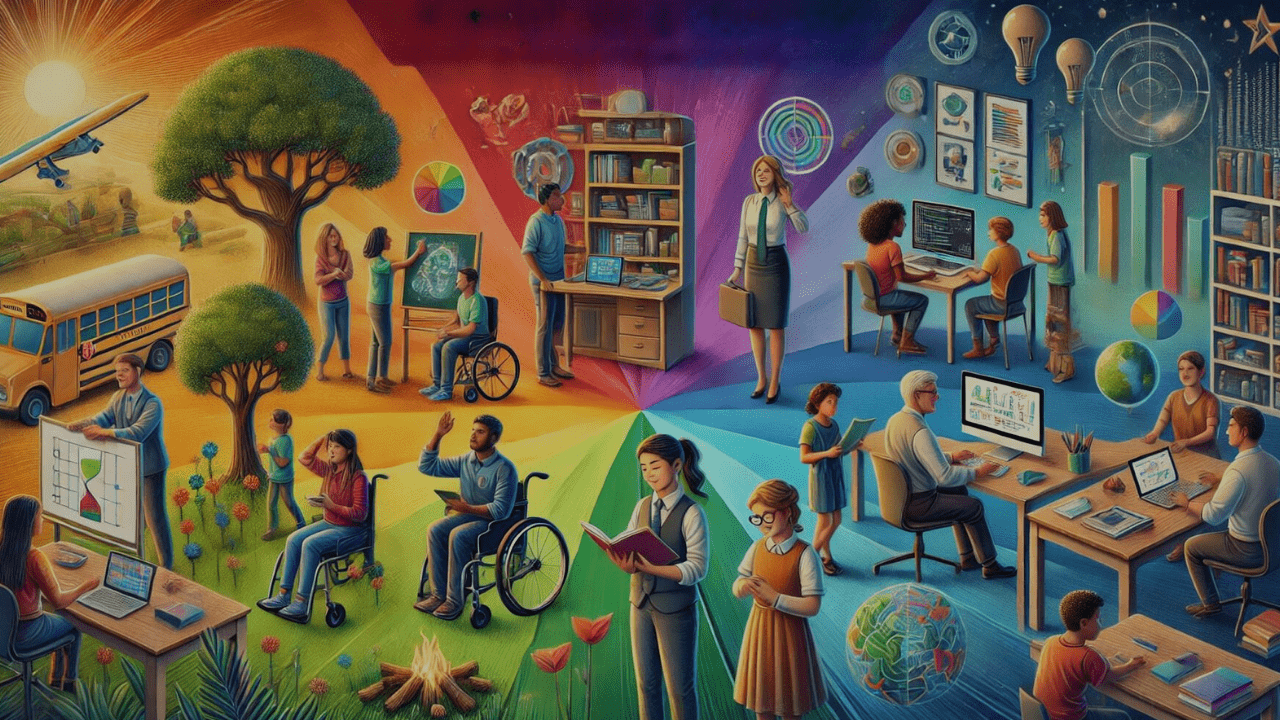Thinking Beyond Learning Styles
Background
The father and son opened the package of the new gadget that they had purchased and were trying to figure out how to set it up. While the father was trying to read the accompanying instruction manual, the son was busy going through the section that had the steps outlined in pictorial format. It was clear that the senior preferred the printed word, while the junior’s preference was for the visual images.
Just like the above-mentioned differences, we all have heard of preferred learning styles. There are those, who like to learn by listening; they like audio books, podcasts and anything that is auditory in nature. There are some who prefer to learn via experience—moving, touching, and doing.
So, are these categorizations based on evidence? Are learning styles real? Are the distinctions backed by research?
Myriad theories
The concept of each person having a preferred style of learning is a popular one amongst educators and trainers. Most L&D professionals try and incorporate elements from it while designing their presentation content and leaning material. A simple google search will throw many theories on learning styles and also numerous questionnaires and surveys that help assess an individual’s learning preferences.
Some of the popular theories in this space are:
- The VAK theory proposed by Walter Burke Barbe and colleagues in the 1920s had three learning modalities – visualizing, auditory and kinesthetic.
- Howard Gardner’s theory of Multiple Intelligence (1980s) introduced eight different types of intelligences – Logical/Mathematical, Linguistic, Musical, Spatial, Bodily-Kinesthetic, Naturalist, Interpersonal, and Intrapersonal.
- Psychologist David Kolb outlined his theory of learning styles in 1984 where he talked of concepts such as Abstract Conceptualization, Active Experimentation, Concrete Experience and Reflective Observation.
- Neil Fleming, after observing thousands of hours of student behavior in classrooms, published a research in the 1990s where he outlined four different learning styles – visual, auditory, reading/writing and kinesthetic.
Additionally, there are many different models that are talked about – “left brain vs right-brain”, “verbaliser vs visualizer”, “solitary-learner vs social-iearner”, etc. As per some estimates there are more than 70 such theories on learning styles.
Drawbacks
The problem with these theories is that there is no clearly defined framework for learning styles. Different authors and researchers have propounded their theories based on differing parameters about the same concept.
Also, the intricacies of the human brain, and by extension our capacity to use it, is still understood only at a minuscule scale.
Another problem is that putting people in categories can lead to the assumption of fixed or rigid learning style, which can hamper the motivation to learn or adapt.
There is no consistent evidence that teaching for specific learning styles produces better outcomes. Experts are of the view that such theories are too simplistic and lack evidence-based research.
All of these may lead to outcomes that may prove counter-productive to learning and to adaptability.
What L&D professionals must do
Clearly, while teaching / training we must use multi-sensory inputs such as visual, auditory, tactile and kinesthetic, the overall objective should be to make the process creative, fun and appealing.
As theories are evolving and also as the context around us is constantly changing, teachers and trainers need to equip themselves with multiple tools to engage their audience.
In today’s age of low attention span and multiple digital distractions, learning methodologies must go beyond the traditional methods. In addition to the above-mentioned sensory resources, facilitators must employ creative group-based activities, group presentations (in formats such as skits, radio jingles, TV interviews), short debates, quizzes, game-based learning, etc.
Digital learning is another new context that may open up a whole lot of new empirical evidence on learner preferences.
There is lot of evidence of how mobile-based applications (Kahoot, Menti, Padlet, Mindmarker, etc.) have proved excellent engagement tools during and after training programs.
The pandemic has resulted in a lot of deliberations around remote delivery of information, and the ways and means of keeping the consumer engaged. As with most of the things around us, the fascinating world of learning is further metamorphisizing.





Leave a comment